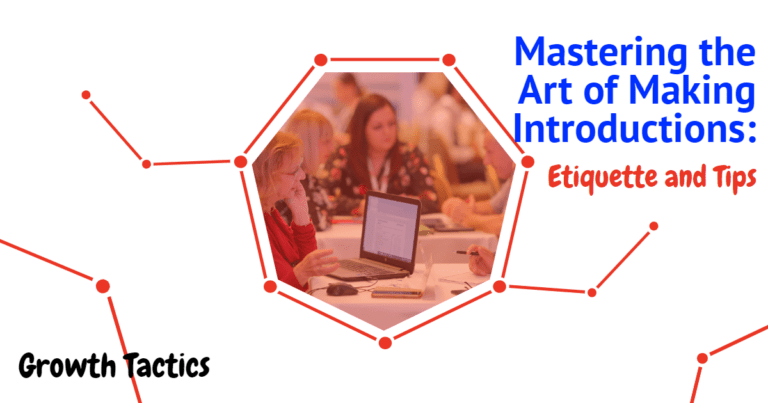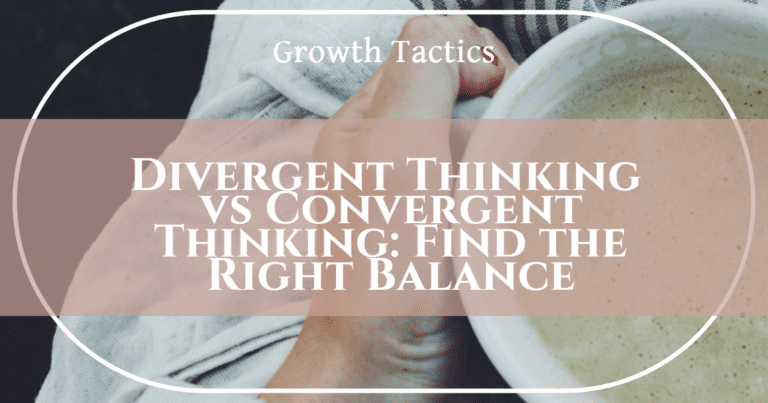We’ve all encountered them at some point in our lives: difficult people. Whether it’s a co-worker who constantly complains, a family member who always finds fault, or a friend who seems to have a knack for pushing our buttons, difficult people can make our lives more challenging. But fear not! In this article, we’re going to explore the different types of difficult people we may come across and delve into effective strategies to deal with them. So, if you’re ready to take the reins and navigate these tricky interactions with confidence, let’s dive right in!
Jump To Section
Understanding Difficult People
Have you ever wondered what makes certain individuals so difficult to deal with? Let’s dive into the psychology behind their challenging behaviors.
People exhibit difficult behaviors for a variety of reasons, often stemming from their unique life experiences, beliefs, and personality traits. It’s crucial to remember that difficult behavior does not define a person as entirely negative; rather, it’s a manifestation of their struggles or coping mechanisms.
The Psychology Behind Difficult Behaviors
To truly understand difficult people, we need to delve into the reasons behind their actions. Here are a few psychological factors that contribute to challenging behaviors:
- Past Experiences: Difficult behaviors can be shaped by past traumas, disappointments, or unresolved conflicts. These experiences may lead individuals to develop defense mechanisms or coping strategies that can make interactions challenging.
- Insecurity and Low Self-Esteem: Some difficult people may struggle with feelings of inadequacy or low self-esteem, leading them to exhibit defensive or confrontational behaviors. They might project their insecurities onto others, making communication and collaboration problematic.
- Communication Styles: People have different communication styles, and some individuals may lack effective communication skills. This can result in aggressive, passive-aggressive, or passive behaviors, creating friction in interactions.
- Personal Beliefs and Values: Clashing belief systems or values can lead to conflicts and difficult interactions. When people strongly hold onto their perspectives and refuse to consider alternative viewpoints, communication can become strained.
- Emotional Challenges: Difficult behaviors may be rooted in emotional challenges such as anger, fear, jealousy, or resentment. These emotions can cloud judgment, impair communication, and ignite conflicts.
Understanding the psychology behind difficult behaviors can help us approach challenging individuals with empathy and patience. By recognizing that their behavior is often a response to their struggles, we can better navigate these interactions and find effective ways to handle them.
In the next sections, we’ll explore some common types of difficult people that we may encounter and strategies we can employ to effectively deal with them. So, let’s continue our journey in understanding and managing difficult people together!
Types of Difficult People
Dealing with difficult people requires us to understand the unique traits and behaviors they exhibit. Let’s shine a light on the different types of difficult individuals you may encounter in your personal or professional life and explore strategies to handle them effectively.
1. The Perfectionist
The Perfectionist is someone who has high standards and expects nothing less than perfection from themselves and others. They often have a rigid mindset and can be critical of any deviation from their ideal.
Why They Act This Way
Often, this behavior isn’t about achieving perfection but about avoiding failure. The Perfectionist’s self-worth is deeply tied to their performance and accomplishments. They live with an intense fear of being judged or criticized, so they try to control every detail to prevent any possibility of error. This drive is often rooted in deep-seated insecurity.
To navigate interactions with a Perfectionist, it’s essential to communicate clearly, set realistic expectations, and provide constructive feedback.
2. The Controller
The Controller is characterized by their desire to maintain control over every aspect of a situation. They may micromanage tasks, undermine others’ ideas, or insist on having the final say.
Why They Act This Way
The need for control usually stems from a profound fear of the unknown and a lack of trust in others. Controllers often feel anxious and unsafe when they aren’t in charge. By managing every detail, they create a sense of predictability and security for themselves. This behavior may have developed from past experiences where letting go of control led to negative consequences.
When dealing with a Controller, it’s important to establish boundaries, assert your perspective, and find opportunities for collaboration rather than confrontation.
3. The Negative Nelly
The Negative Nelly is an individual who always sees the glass as half empty. They focus on problems, highlight flaws, and struggle to find positivity in any situation.
Why They Act This Way
Negativity can be a defense mechanism. By anticipating the worst-case scenario, they feel they are protecting themselves from disappointment and can never be caught off guard. This outlook might be a learned behavior from their upbringing or a symptom of underlying anxiety or depression. For some, it’s a way to feel in control by “realistically” managing expectations.
When interacting with a Negative Nelly, it’s crucial to maintain a positive outlook, empathize with their concerns, and redirect the conversation towards solutions.
4. The Drama Queen/King
The Drama Queen/King thrives on attention and often exaggerates situations to create drama. They can be emotionally volatile and tend to make small issues seem larger than life.
Why They Act This Way
At its core, this behavior is driven by a need for attention and validation. Drama Queens/Kings may feel overlooked or unimportant, and creating a crisis puts them at the center of the story, ensuring they are seen and heard. The emotional intensity can also be a way to feel alive and distract from feelings of inner emptiness or boredom.
To handle a Drama Queen/King, it’s important to stay calm, avoid getting caught up in their theatrics, and address the core issue without fueling unnecessary drama.
5. The Passive-Aggressive
The Passive-Aggressive individual struggles to express their true feelings directly and instead resorts to subtle, indirect, or sarcastic remarks.
Why They Act This Way
This behavior is rooted in a fear of direct conflict. The person feels angry, resentful, or disagrees with something, but is too afraid to state it openly for fear of confrontation or rejection. As a result, their negative feelings “leak out” through indirect means like procrastination, sarcasm, or the silent treatment. It’s a dysfunctional way to exert control without the risk of a head-on clash.
Dealing with a Passive-Aggressive person requires clear communication, addressing issues directly, and encouraging open dialogue to uncover any underlying concerns.
6. The Know-It-All
The Know-It-All believes they have an answer for everything and constantly interrupts or dismisses others’ opinions.
Why They Act This Way
This is often a facade to cover up deep-seated insecurity. The Know-It-All is terrified of appearing incompetent or unintelligent. By projecting an aura of supreme knowledge, they protect their fragile ego. Admitting “I don’t know” feels like admitting failure, so they overcompensate by attempting to dominate every conversation with their expertise.
When dealing with a Know-It-All, it’s important to remain confident in your expertise, redirect the conversation towards collaborative problem-solving, and acknowledge their knowledge without letting it overshadow other perspectives.
7. The Victim
The Victim constantly sees themselves as being mistreated or wronged by others. They may play the blame game and avoid taking responsibility for their actions.
Why They Act This Way
Playing the victim is a powerful way to avoid accountability. Taking responsibility for one’s actions can be frightening, as it opens one up to criticism and consequences. By shifting blame, the Victim garners sympathy and deflects any negative attention. This can be a form of learned helplessness, where they’ve discovered that this role gets them attention and absolves them of the need to change.
When interacting with a Victim, it’s important to validate their feelings, set clear boundaries, and encourage them to explore their role in the situation.
8. The Manipulator
The Manipulator is skilled at influencing others to achieve their own goals, often at the expense of others. They may employ tactics such as guilt-tripping, gaslighting, or deceit.
Why They Act This Way
Manipulators often operate from a place of deep-seated insecurity and a belief that their needs will not be met if they are direct and honest. They view relationships as transactional and may lack the empathy to consider the feelings of others. Their goal is to control the situation and “win,” and they see manipulation as the most effective tool to do so.
Dealing with a Manipulator requires assertiveness, trust in your judgment, and maintaining healthy boundaries to avoid being manipulated.
9. The Bully
The Bully seeks to assert power over others through intimidation, aggression, or belittlement. They thrive on making others feel small and vulnerable.
Why They Act This Way
Bullying is almost always a tactic used to compensate for a feeling of powerlessness or inadequacy. By intimidating and controlling others, the Bully gets a temporary feeling of power and importance. This behavior may stem from their own experiences of being bullied or growing up in an environment where aggression was modeled as a way to gain control or respect.
When dealing with a Bully, it’s important to prioritize your safety and well-being, document their behavior if necessary, and seek support from trusted individuals or authorities.
10. The Time Bomb
The Time Bomb is someone who can explode with anger or frustration seemingly out of nowhere. They may have difficulty managing their emotions and can become unpredictable.
Why They Act This Way
This explosive behavior is often a sign of poor emotional regulation. The person may not have learned healthy coping mechanisms for stress, anger, or frustration. Their feelings build up under the surface until a small trigger causes a disproportionately large reaction. It can also be a result of chronic stress, anxiety, or trauma that leaves them feeling constantly overwhelmed and on edge.
When interacting with a Time Bomb, it’s important to stay calm, listen actively, and de-escalate the situation by offering support and empathy.

Dealing with Difficult People
Navigating interactions with difficult individuals can be challenging, but with the right strategies, you can handle these situations effectively. Let’s explore some techniques that will empower you to maintain your composure while dealing with difficult people.
Effective Communication Strategies
Communication is key when it comes to managing difficult people. By employing effective communication strategies, you can foster understanding, diffuse conflicts, and build healthier relationships:
- Active Listening: Give the person your undivided attention, listen to their perspective, and seek to understand their needs and concerns. This will show them that you value their opinions and can help de-escalate tense situations.
- Use “I” Statements: When expressing your thoughts or feelings, utilize “I” statements to avoid sounding accusatory. For example, say, “I feel frustrated when this happens” instead of “You always make me angry.”
- Empathy and Validation: Put yourself in the other person’s shoes and try to understand their emotions and motivations. Show empathy and validate their feelings, even if you don’t agree with their behavior. This can help create a more conducive environment for open dialogue.
Setting Boundaries
Establishing boundaries is crucial when dealing with difficult people. Setting clear limits helps protect your emotional well-being and ensures that your needs are respected:
- Clearly Define Expectations: Clearly communicate your expectations for behavior and what you consider acceptable or unacceptable. This can help prevent misunderstandings and establish a foundation of mutual respect.
- Reinforce Boundaries: When someone crosses a boundary, calmly and assertively communicate the impact their behavior has on you and reaffirm your boundary. Consistently upholding your boundaries will send a message that you won’t tolerate disrespectful or harmful actions.
Remaining Calm and Composed
Keeping a calm and composed demeanor can help defuse tense situations and reduce the impact of difficult behavior:
- Take a Breath: When faced with challenging behavior, take a deep breath to center yourself and maintain your composure. This can help you respond thoughtfully instead of reacting impulsively.
- Focus on Solutions, Not Conflict: Shift the conversation towards finding solutions rather than getting caught up in a power struggle. By redirecting the focus to problem-solving, you can maintain a more constructive dialogue.
Seeking Support and Mediation
Sometimes, dealing with difficult people can become overwhelming. In such cases, seeking support or mediation can provide valuable assistance:
- Talk to a Trusted Confidant: Reach out to someone you trust who can lend a listening ear and offer advice. They may provide fresh perspectives or help you brainstorm effective approaches.
- Mediation Services: In more challenging situations, consider involving a neutral third party, such as a mediator or counselor, to facilitate productive communication. This can help create a safe environment for all parties involved.
Knowing When to Walk Away
In some instances, despite your best efforts, it may be necessary to disengage from interactions with difficult individuals:
- Protect Your Well-being: If an individual repeatedly displays toxic or abusive behavior and refuses to change, prioritizing your well-being may mean ending or limiting contact with them.
- Seek Professional Help: If the situation is impacting your emotional health or becomes dangerous, reach out to professionals or authorities who can provide guidance and support.
Remember, managing difficult people takes practice and patience. By implementing effective communication strategies, setting boundaries, maintaining your composure, seeking support when needed, and knowing when to walk away, you can navigate these challenging interactions with grace and resilience.
Conclusion
In conclusion, dealing with difficult people can be a real challenge, but armed with the right strategies, you can navigate these tricky situations with confidence. By understanding the different types of difficult people we may encounter implementing effective communication techniques, setting boundaries, and remaining calm and composed, we can maintain our well-being and foster healthier relationships.
Stay resilient, embrace your inner strength, and approach these encounters with a calm and confident mindset. You’ve got this!








